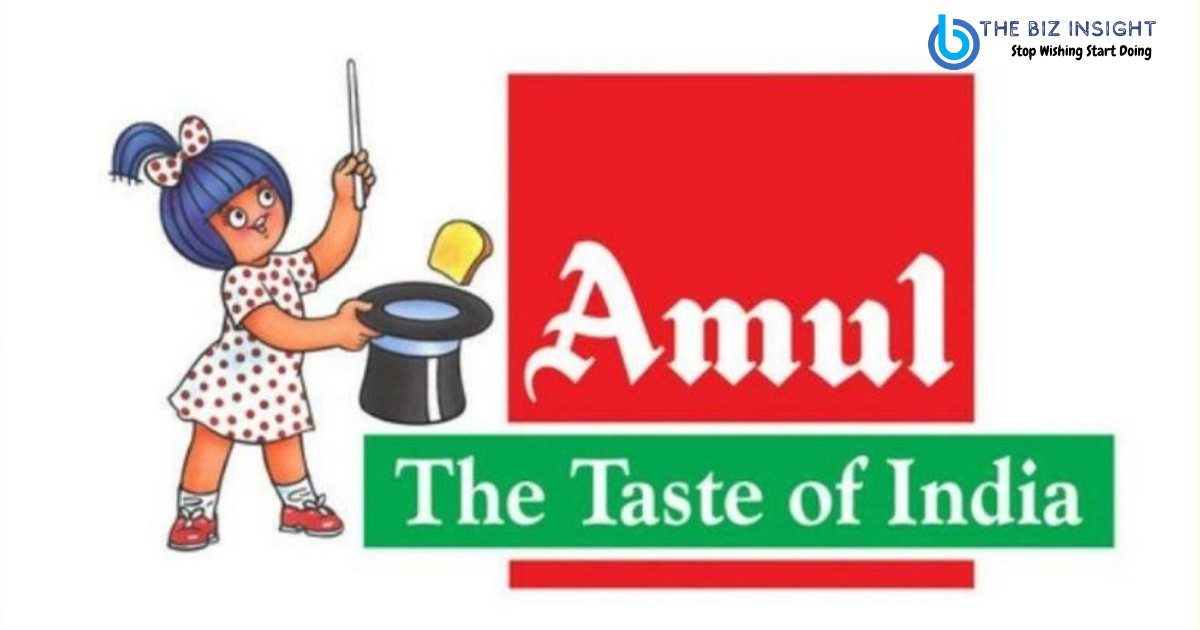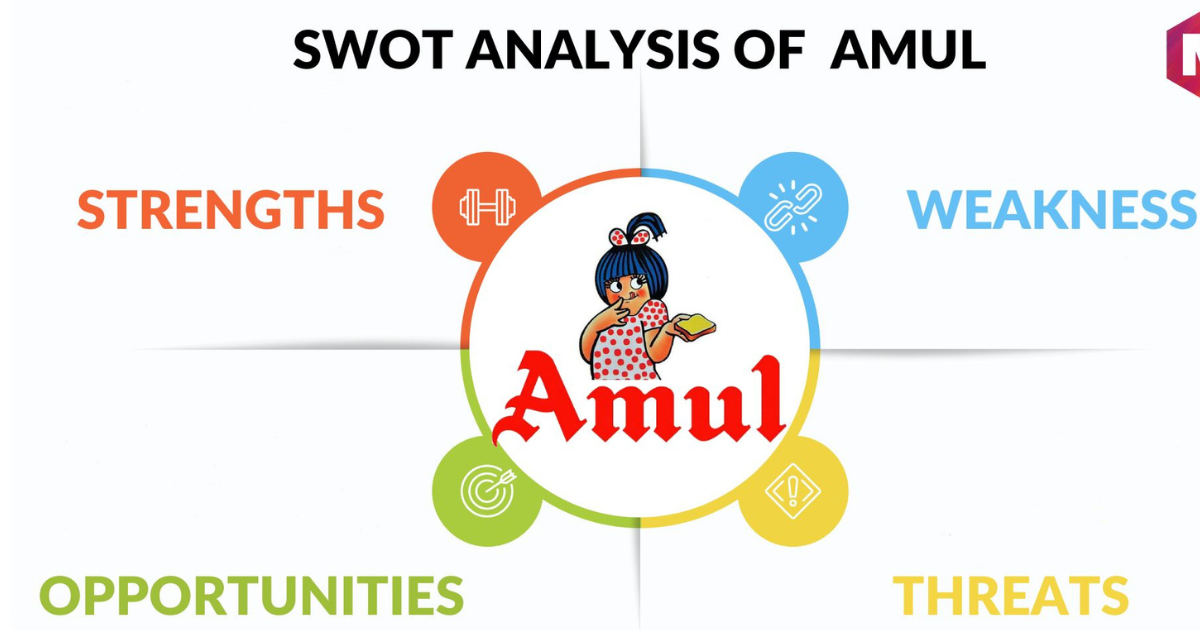Introduction
Discover the comprehensive Amul Marketing Strategy: From Zero to Hero that transformed Amul from a local cooperative to India’s leading dairy brand. Learn about its product innovation, pricing strategy, digital transformation, and more.

Understanding of Amul Marketing Strategy: From Zero to Hero
Amul is India’s largest selling dairy brand that over the years has been following a well analyzed and strategic marketing mix that comprises product differentiation, customer selling methods and efficient communication techniques. This strategy has enabled Amul keep on with its dominance in the highly competitive dairy products market.
Marketing practices and strategies are central to the dairy industry operations as shown in the following sub-topics.
Marketing is fundamental in the dairy industry since it helps to distinguish products within the industry, to attract and maintain consumers as well as to encourage more purchases. Especially, the strategic approach to marketing is the key to Amul’s domination and development.
Brief History of Amul
Started in 1946, this organisation was founded to become the Amul as a cooperative dairy and free the farmers from the exploitation of middlemen. Thanks to the effective leadership and the marketing strategies formulated and implemented over the years, Amul has turned into a world’s largest dairy company.
The major distinctive functional marketing strategies of Amul are as follows:
Product Strategy
Variety of Products
This is the list of Amul products: Milk, Butter, Cheese, Ice cream, Yogurt, etc. This choice allows satisfying the preferences of many consumers and gaining coverage on the market.
Innovation in Product Development
Amul is a good a model of organizational innovation as it does not resist change but embrace change by creating new products or flavors. This commitment to innovation contributes the success of the brand in that it sustains market relevance and competition.
Pricing Strategy
Competitive Pricing
Regarding the pricing strategy, Amul implements a very competitive pricing that makes its products easily accessible to all its consumers. It also ensures the brand sustains market share and appeals to the price sensitive segment of the market.
Value for Money
Amul also highlights the aspect of value for money as it deals in selling all its products at affordable prices. The primary benefit of this strategy is the consumers’ trust that helps create brand loyal customers and is good for the long-term.
Place Strategy
Distribution Channels
This has made Amul have a wider coverage of the markets for its products and it supplies both the urban and the rural markets. The brand is currently GOD using both physical and new age distribution techniques to market and communicate with the consumers.
Rural and Urban Penetration
Amul has penetrating its markets not only on the rural areas but also on the urban areas too. It has a good supply chain system and distribution channel that makes it cover a large number of customers.
Promotion Strategy
Advertising Campaigns
Among the latter it is worth mentioning advertising campaigns, with which Amul is associated especially with the well-known Amul Girl who presents humorous and appealing to the consumer’s reason headlines. These campaigns provide a method through which brands can be advertised and can easily be remembered and used by customers.
Brand Ambassadors
Now and then, Amul uses brand icons to market its products to gain the confidence of the public. These ambassadors assist the growth and recognition of the brand beyond the usual target or projected market demographic.
Digital Marketing
With regards to the consumer base, Amul has switched to digital marketing to connect with a younger generation more familiar with technology. Sustaining the brand through social media presence and occasional posts prevents the brand from becoming obsolete.
Iconic Advertising Campaigns

The Amul Girl Campaign
Technique number 1: Use of the famous Amul girl: launched in 1966, is considered to be one of the best mascots used in the advertisement. Famous especially for her humor and satire of current affairs, she is already an iconic personalities of the Indian popular culture.
Taglines and Slogans
Beyond the products themselves, Amul utilizes slogans such as “The Taste of India,” that has a strong appeal to the target audience and accentuates the brand’s image. These slogans themselves are marketing tools that are used as part of Amul’s total marketing communication.
Social Media and Digital Campaign
Amul’s approach with social media marketing is timely and active content, which elicits the creation of some conversation. This is probably due to the relevance and cleverness of most of the posts the brand makes.
Print and Television Advertisements
Print and television commercials of Amul are considered among the best as they are extremely funny and could be easily connected with real life. Such campaigns are frequently related to modern issues and trends so they also become viral and well-received.
Amul’s Digital Transformation
Embracing E-commerce
Recently, Amul has ventured more into e-commerce through put on the internet markets for consumption of its products. It addresses the increasing market need for the ordering and receiving of products and/or services online and provides better convenience for customers.
Social Media Presence
The social media marketing planning of Amul is to develop the content the firm posts in social media that interests its target consumers. Its posts are often timely and inventive, and help remind people of the brand’s existence.
Influencer Collaborations
Influencer marketing has played a part in upping the visibility of Amul among consumers or customers. These affiliations make the brand’s messages more credible and help spread the brand message across the internet.
Customer Engagement Online
Another key activity that Amul does is maintaining an online presence and interacting with customers frequently in cases of queries and feedbacks. It provides loyalty for a business’s consumer base and strengthens the perception of the brand.
This paper discusses the Role of Cooperative Structure.
The Cooperative Movement
Thus, it can also be concluded that Amul’s cooperative structure is the key factor behind its success. Thus, the unification of small farmers guarantees that the brand establishes work objectives and fairly divides profits.
Empowerment of Farmers
Amul has an advanced marketing strategy whereby it supports its farmers through providing them with necessary tools and educating them. This support aids in enhancing productivity and the consistence of the quality of the milk supplied to the consumers.
Governance and Management
The governance structure of Amul has been formalized and focuses on the three core principles of transparency and accountability. It has a farmers-oriented board of directors, responsible for the cooperative’s management, who are elected directly from the farmer-members.
Market Segmentation and Targeting
Segmentation Criteria
Yes, according to its operational strategies, Amul divides its market on demographic basis, geographical area and Psychographic. This kind of segmentation assists the brand in directing its marketing communications more effectively to target audiences.
Targeting Strategies
Amul aims at various groups of consumer markets which include the children, adults among the population ensuring that it targets as many people as possible. Product promotions tailored to the specific segment include marketing messages from the brand.
Positioning in the Market
In this case, Amul will market and sell its dairy products and position itself as a brand that is affordable yet quality. This is further backed through the considerations and implementation of branding and communication strategies.
Competitive Analysis
Key Competitors
Amul has competition both from the national as well as the foreign brands of dairy products. Leading competitors are Nestlé Foods, Mother Dairy Foods and others players from regional dairy cooperative.
Amul’s Competitive Advantages
Amul has a good brand image, a large number of vending centers, and a good reputation for the quality of its products. They support brand’s position on the market and allow it remain a leader.
SWOT Analysis

Using the strengths, weaknesses, opportunities and threats (SWOT) technique, the Gopal and Gupta identify that Amul has strengths in its reputation and the loyalty of Indian farmers and opportunities in the new markets. On the other hand, some issues such as competition in the market place and regulatory factors still remain a problem.
Challenges Faced by Amul
Market Competition
Another threat facing Amul is the high level of competition that currently characterizes the dairy industry. This means that the brand must be improving its quality and offering new products to outdo its competitors.
Supply Chain Issues
This is important for the Amul in that they need to make sure that the supply chain is seamless. The brand experiences difficulties in supply-chain and especially in preservation of products in remote area.
Regulatory Challenges
Thus, it becomes daunting for Amul to handle the various regulations affecting the production and sale of its dairy products. It must be understood that the regulation and standards of food safety are dynamic and need thorough attention.
Conclusion
Brief Overview of Amul Marketing Strategy
Amul’s marketing concept lies on the principles of a cooperative and on innovation, it became the largest dairy brand in India. Starting from the range of products offered at reasonable prices to the catchy ad slogans and jingles and now the brilliant switch to digital media, Amul has always set the standard right when it comes to marketing.
Conclusion on the Factors of Success in Amul
In analysing the case of Amul, it is apparent that strategic marketing is paramount for any business success story, but even more so for cooperatives, which should not lose sight of their founding principles and values. This is because Amul has embraced change and innovation to ensure that it stays relevant in the market and appeals to the customers.
Another Step to Draw More Attention
For more insights about Amul’s successful new product marketing approaches and how they can be applied in your own organisation, refer to more comprehensive articles and case studies. Subscribe to our newsletter to get the latest trends of the dairy industry.
FAQs
What is Amul’s unique selling proposition?
Amul’s unique selling proposition lies in its high-quality, affordable dairy products and its strong cooperative structure that benefits local farmers.
How has Amul adapted to digital marketing trends?
Amul has embraced digital marketing by establishing a strong presence on social media platforms, engaging with influencers, and leveraging e-commerce channels.
What are some of Amul’s most successful advertising campaigns?
Some of Amul’s most successful advertising campaigns include the Amul Girl series, which features witty, topical ads, and the “Utterly Butterly Delicious” campaign.
How does Amul’s cooperative structure benefit farmers?
Amul’s cooperative structure ensures fair trade practices, equitable profit distribution, and provides farmers with resources and training to improve productivity.
What are the future growth prospects for Amul?
Amul’s future growth prospects include expanding into new markets, leveraging technological innovations, and continuing to adapt to emerging trends in the dairy industry.

